The World Heritage Islands where Ocean and Sky Meet
2021/07/30
Koror (Palau)
Indigo, cobalt, marine blue… Awaiting us is a world heritage sea where various “blues” compete with each other. The Republic of Palau, located in the Pacific Ocean, is an island nation where the sea nurtures more than 1,000 species of living creatures and where untouched nature remains in abundance. On the other hand, the country with a population of less than 20,000 is visited by 160,000 tourists a year, and its rare natural environment is in danger. In Palau, there is a “promise” to preserve the beautiful landscape for the future. This promise, a groundbreaking initiative that will change the mindset of visitors, aims to change the future of this tropical paradise.
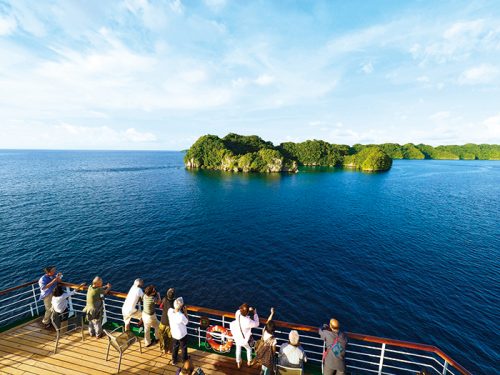
Rock Islands, a World Heritage Site
Around dawn, as the speed of the ship slows to a crawl, you can climb onto the deck to see the silhouette of islands rising above the sea, bathed in the faint morning sun. The 400 or so islands, large and small, are Palau’s pride and joy, the Rock Islands. Their unique mushroom-like shape is the result of tens of thousands of years of erosion of the limestone islands by currents and organisms. They are home to hundreds of species of coral and a wide variety of living things, and traces of human activity dating back 3000 years have also been discovered. Quietly, the morning sun gradually colors the island, the sea, and the sky. Before you know it, many people are on the deck, gazing at the mysterious scene that cannot be expressed in words.
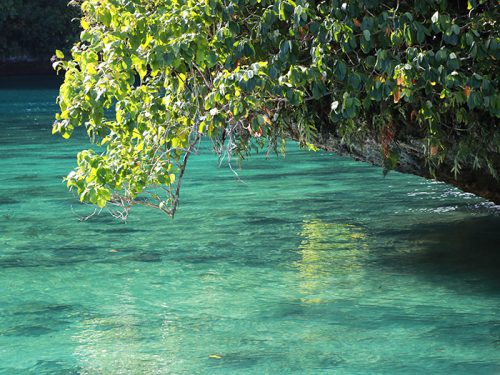
The Milky Inlet, Milky Way
After landing in Palau, you are transferred to a small boat and head out to sea again. The boat will arrive at the Milky Way, a cobalt blue inlet surrounded by the Rock Islands you have just seen from the ship. The guide suddenly jumps into the sea and picks up a handful of milky white mud from the bottom. Limestone rocks dissolved from the islands have been deposited as mud, and if applied, the rich minerals will moisturize and beautify your skin. Laugh at each other completely covered with white mud, before washing it off by diving directly into the sea! It’s such a happy feeling that everything is washed away with the mud.
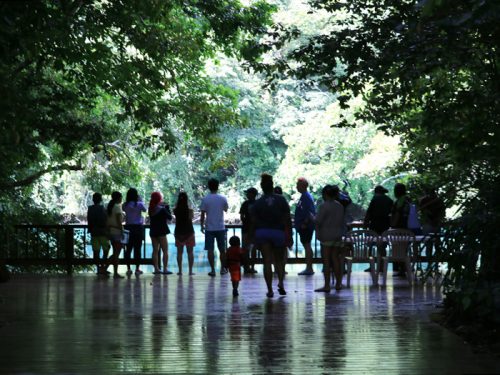
At the End of the Dense Jungle
The northern island of Babeldaob is a symbol of the lush greenery of Palau. As you enter the dense jungle, you are surrounded by the sound of the wind rustling the leaves, the twittering of birds, and the life force of nature. The guide leads you through the forest, and what awaits is the largest waterfall in Palau, Ngardmau Waterfalls. It’s exciting to see the huge waterfall with a drop of 30 meters and a width of 37 meters. At the waterfall basin, the water is pouring down as mist and refreshes your mind and body. Palau has a strong image of the ocean, but its ancient forests are also a place where you can experience a sense of oneness with nature.
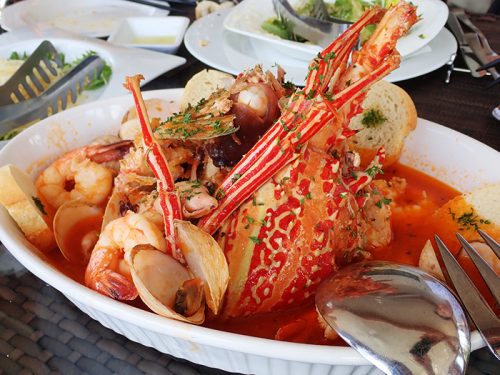
Island in Peace
After enjoying the sea and the forest, it is time to return to Koror Island, the center of Palau, for lunch to satisfy your appetite. At a restaurant by the sea, you can enjoy mangrove crab, a specialty of Palau. The freshly steamed crab is filled to the very tip of the claws with juicy meat! The taste is beyond expectations! When you walk around Palau, you often see signs in Japanese. These are remnants of the time when Japan ruled Palau. Located in the southern part of Palau is the island of Peleliu, which was the site of a fierce battle during World War II. The scars of the fierce battle can still be seen here and there on the island. We can call this island “beautiful” because we are now in a peaceful time. The beauty of the islands make us reflect that it is because of peace that we are able to travel.

A “Promise” for the Children of Palau
There is a word seen and heard often in Palau – “The Palau Pledge.” This is a pledge to protect Palau’s nature that tourists must sign before entering the country. What is unique about the Palau Pledge is that Palauan children were involved in its drafting. While there are many ordinances that advocate environmental protection, the Palau Pledge is progressive because it makes adults and tourists promise to the children of the future to take care of the environment. The Peace Boat Voyage was the first large cruise ship to take the Palau Pledge since it became mandatory, and so then President Tommy Remengesau Jr visited the ship on the occasion of the signing ceremony.
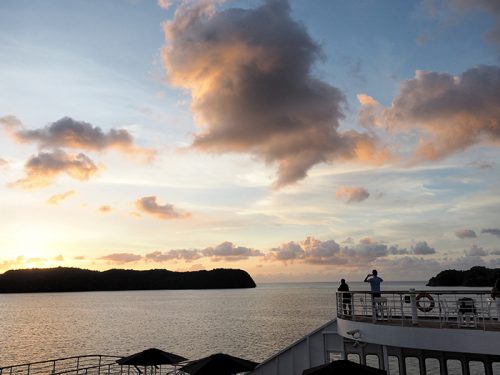
The Palau Pledge was also signed by the people of Palau, reflecting the President’s words that change requires the commitment of all people. The pledge says, “I vow to tread lightly, act kindly, and explore mindfully.” As we sign it, we also try to be mindful of the natural environment and respect the Palauan culture during our stay. This “promise for the future” to protect the beautiful seas and forests for the children of Palau teaches us that anyone can take action for the environment beyond the position of a tourist.
PHOTO: PEACEBOAT, Mizumoto Shunya, Matsuribi Toshitatsu
